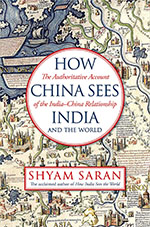Two and a half years after Chinese troops amassed and transgressed points on the Line of Actual Control with India, there isn’t a definitive answer on just why Beijing carried out its aggression. Is this about history and reclaiming areas that once belonged to Tibet? Or is it in line with China’s present day ‘hegemonism’ that External Affairs Minister S Jaishankar alluded to, of the sort seen with Taiwan and in the South China Sea? Are the PLA’s moves to occupy land claimed by India, laying down bunkers and rolling in vehicles and equipment tactical—aimed at stopping the Indian Army’s considerable advances on border infrastructure, roads, bridges and landing strips? Or are they strategic, and aimed at cutting off India’s ability to mount an attack on China’s road links with Pakistan? Or are they purely reactive, and planned in response to the Modi government’s reorganization of Jammu and Kashmir, and the Home Minister’s stated ambition in Parliament of taking back those parts of Kashmir occupied by China (Aksai Chin) and Pakistan (PoK)?
While Shyam Saran’s latest work The Authoritative Account of the India-China Relationship, a fitting successor to his previous book, How India Sees the World, does not deal at much length with the latest standoff between India and China, it provides the framework with which to make your own assessment of the answer. The book is a comprehensive study of the history of four millennia of ties between the two countries, written in Saran’s signature simple style. It begins with a useful chart, showing important events, kingdoms and rulers in China since 2000 BCE and concurrent developments in India. Later in the book Saran writes about the differences between the two cultures: the idea that Chinese culture has always been ‘visual’—a script where each word is a different character and remains the same regardless of the language versus the Indian culture of ‘shruti and smriti’ (hearing and remembering), ‘where the spoken word, the musical note, the sacred mantra, were to become its defining characteristics,’ Saran notes.

